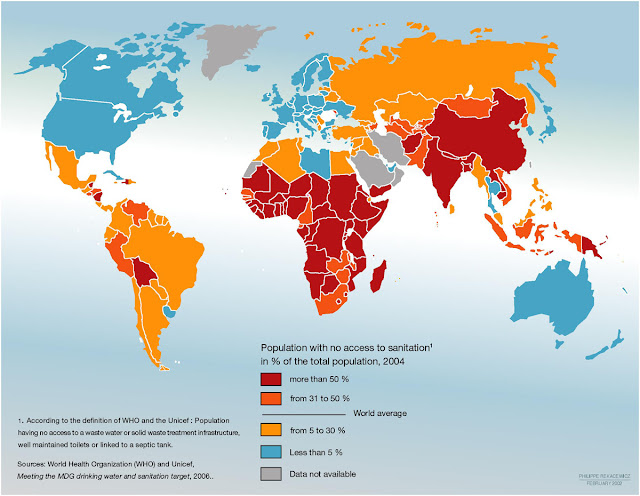Personal Interest: Water & Sanitation
Picture from http://www.unep.org/dewa/vitalwater/article50.html
It is incredibly troubling to know that there are some countries, such as the United States, where the vast majority of the population has readily available access to clean drinking water to the point that it is used in excess or wasted, and yet there are countless other populations in countries that are forced to ingest unsafe or polluted water because they simply have no other alternatives. Another concern is that without basic sanitation, there is a significantly higher risk for these populations to be exposed to preventable diseases. These diseases include but are not limited to: ascaris, dracunculiasis, hookworm, schistosomiasis, and trachoma, not to mention fatalities due to diarrhea. It is imperative that we utilize low cost, sustainable efforts to rectify the situation, so that we may positively impact the populations who are significantly affected by these issues. Everyone should be able to have access to such basic needs and the overall health of our global population would be greatly improved by doing so.


